While watching DanMachi’s second latest season (I’m trying to catch up), it got me thinking about how these “torch”-style decks function. The concept of the “torch” looks sound and interesting; yet, when I look and see reports of these types of decks in function, it feels like the results are a mixed bag.
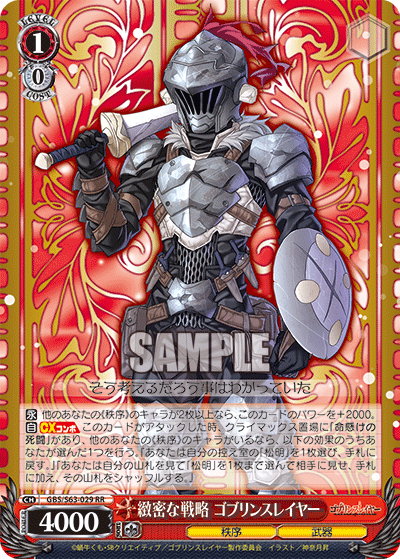
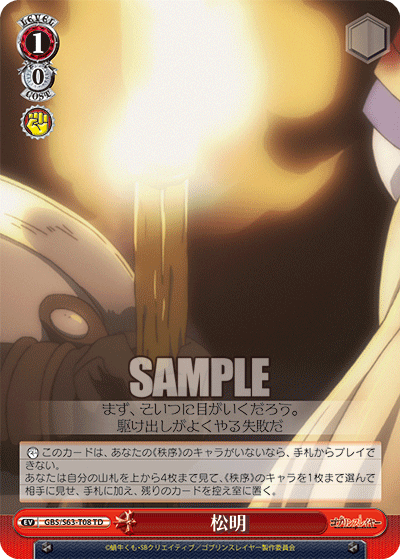
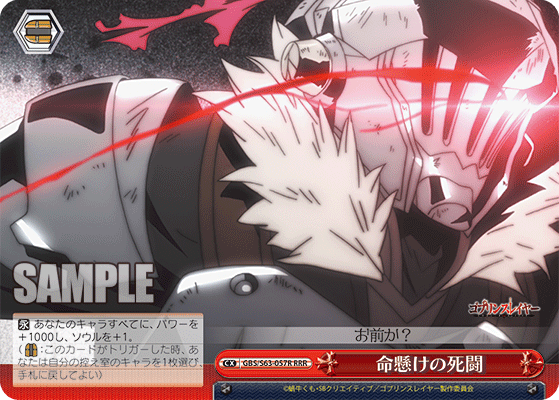
GBS/S63-T08TD 松明 (center)
GBS/S63-057R-RRR 命懸けの死闘 (right)
The so called “Torch” event is pictured in the center. For a quick brief summary of the event, the “Torch” itself is a modular backup that functions as a more enhanced version of the Akatsuki or “Camera” event. I’m not typically a fan of stating strict upgrades as I feel cards are best considered as side-grades to one another depending on the situation. However, generally speaking, for the most part, Torch events are essentially straight up upgrades to the Akatsuki event, mainly because they can be used during the opponent’s turn.
Effectively, Torch decks all function one in the same. The game plan starts with a bonder, such as that of Goblin Slayer to the left, which grabs the Torch event either from deck or waiting room with their combo. And then, during the opponent’s turn, when one of your characters is front attacked, you’ll have the option to use the Torch event to mill through your deck and exchange the Torch for hand during the trigger step. All-in-all, the Torch trades the immediate value of what you can gain from a combo for a potential mill and hand generation in a single package. So the question lies with: why don’t people opt to use this type of combo more?
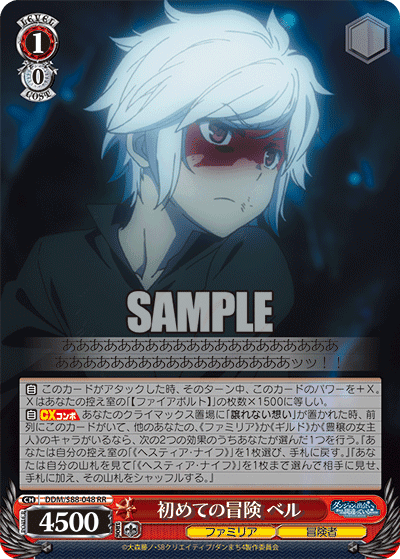
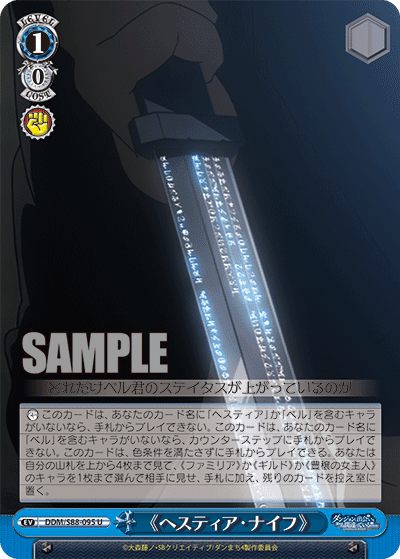
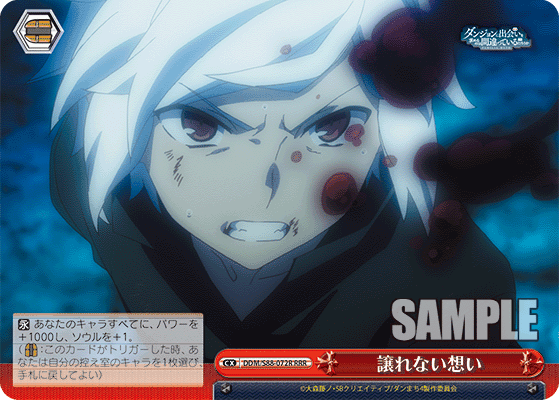
DDM/S88-095U 《ヘスティア・ナイフ》(center)
DDM/S88-072R-RRR 譲れない想い (right)
Following Goblin Slayer, the next most memorable “Torch” deck to my memory was that of DanMachi with Bell (Ketchup Man as I call him). Now there were some improvements here compared to that of Goblin Slayer with their Torch event. The Torch in this deck, which was Hestia’s Knife, lost a bit of variation compared to the original Torch event (Goblin Slayer had two cards with the same name, so you could mix the Torches together). However, in place of that, there were much more event based synergies that allowed you to manipulate the Torch into different assets outside of simply using it in the traditional sense. Now, of course, the most common way to value off the Torch event was to use it as a counter which is how the Torch is still mainly used to this day. However, DanMachi provided a very special support which greatly changed the efficacy of the Torch event as a whole.
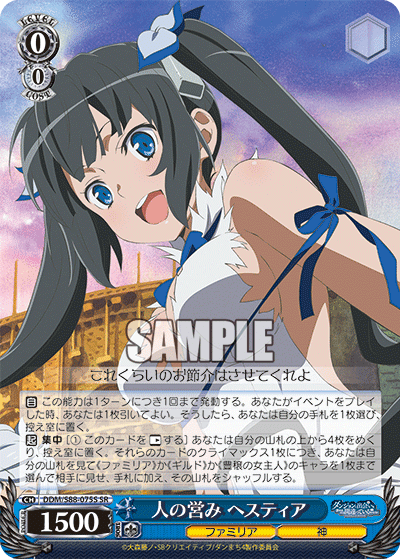
Hestia’s brainstorm now provided the Torch event with another way to cantrip through the deck. Your first Knife use would let you draw and discard a card in addition to doing the Knife ability, effectively milling you up to five cards for free while also letting you fix your hand as well. This small change greatly enhanced the main synergy of the Knife as the main purpose, as stated before with its most common use, was during the opponent’s attack step. Furthermore, Hestia’s ability wasn’t limited to your opponent’s turn either, meaning you could use the Knife during your turn and still benefit as well.
Ultimately, just like many decks in the game, what phased out both Goblin Slayer and DanMachi’s Torch decks was powercreep. Utility profiles became more enhanced, power levels became bigger, and finishers became more powerful. Just like many decks with time, these sets couldn’t keep up.
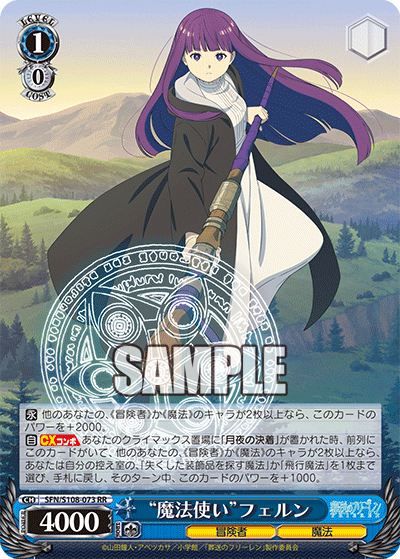
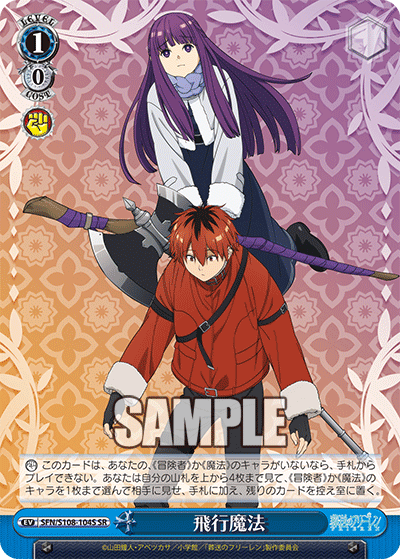
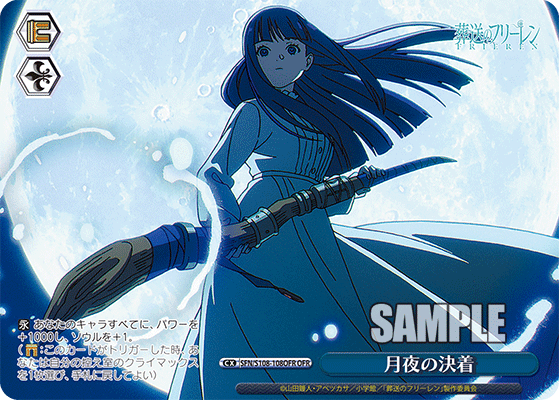
SFN/S108-104S-SR 飛行魔法 (center)
SFN/S108-108OFR-OFR 月夜の決着 (right)
In more recent days, the most common “Torch” deck I’ve seen is that of the fan favourite, Frieren, and more particularly the eight arc build with Fern and her master Frieren (I highly encourage you take a look at our article here for more insight). Fern has somewhat blended the benefits of both Goblin Slayer and Bell. She has retained part of the power that made Goblin Slayer strong as she sits on board usually as a 1/0 6000 powered card and also gained a bit of burst power through Bell’s attack as demonstrated from her extra power boost with her climax combo.
However, unlike Goblin Slayer and Bell, Fern has taken quite a significant loss with the fact that she can only salvage her Torch event unlike Goblin Slayer and Bell. However, to compensate for this, she has access to multiple events, letting you run an additional 1/1 red event in addition to your standard 1/0 Torch event.
Now there are both pros and cons here with the largest con being that Fern needs to you to mill her events to waiting room for her combo to salvage hand. Similar to Bell, she also has a powerful support in her brainstorm as shown below that grants another benefit to playing events.
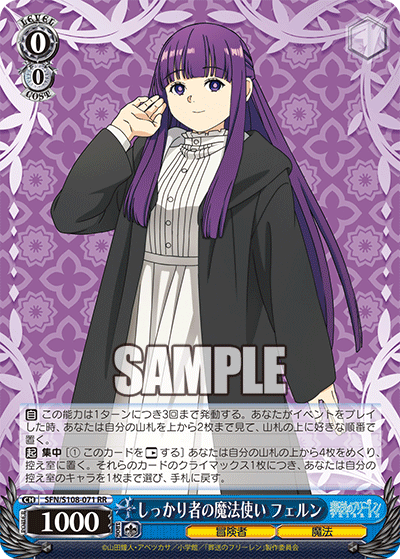
In a way, Fern’s support is even more powerful than Hestia as you can activate her event support ability up to three times a turn. However, Fern’s biggest crucial flaw is that, unlike Hestia, you cannot actually move the cards at the top of your deck, only rearranging them. Now given all these modern side-grades and upgrades, you may be wondering, how has this type of deck not consistently made it to the top of meta decks?
That is due to the fact that even with all this support provided, the main flaw is still quite evident. You have no control over the top few cards of your deck. Without some sort of clairvoyance, for the most part, your top deck will always remain as unknown knowledge. Keeping this in mind, it’s always important to take your deck’s current deck state into consideration. Many players, often new players, like to blitz through their deck, thinking they should just mill four immediately into a new deck. But this isn’t exactly the best of plans. Milling a climax is always more devastating during the opponent’s turn. Taking damage isn’t something you can exactly recover from easily. Should you happen to be in a situation where you mill all your climaxes, well, you’re just out of luck.
The same can be said for if you supposedly just kept the Torch event in hand. You could, in theory, also take a lot of damage by deciding not to mill your deck. Ultimately, there isn’t any proper correct choice when it comes to when you should use the Torch event or not. Experience isn’t going to help you either. For the most part, it comes essentially down to intuition and a bit of luck.
Lastly, the more bigger flaw of the event, and mainly that of Minami/Maguro combos in general. Your gain is solely through the top cards of your deck. That means that if the top cards of your deck are weak level zeros you would rather not draw, well, you’re out of luck. These events live and die by the top cards of your deck. Now there would be a different story if you could also capitalize upon the cards being sent to waiting room, but that would be talking about cards that benefit from salvage generally as whole rather than the Torch event itself.
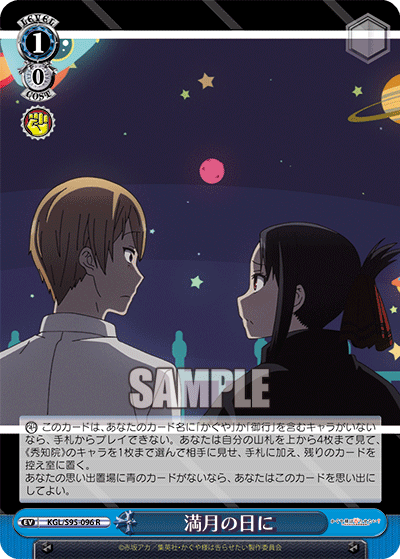
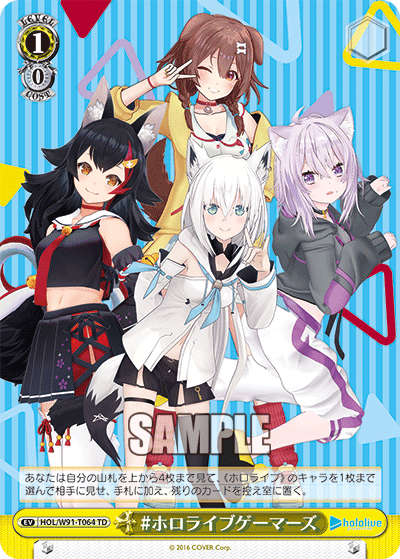
How do we improve upon the events? Well, there isn’t really a way without breaking the design of the core “Torch”. The demerits are obvious as the Torch events will brick on themselves and climaxes. You are also hard locked to the top four cards of your deck when you exchange for hand value. However, it comes with some merits as you can limit the number of cards you mill instead of having to mill an exact amount such as from an Operation Tornado event. I also think that instead of considering the “Torch” event as something that filters for hand, you should see it more or less as a milling tool with a potential upside.